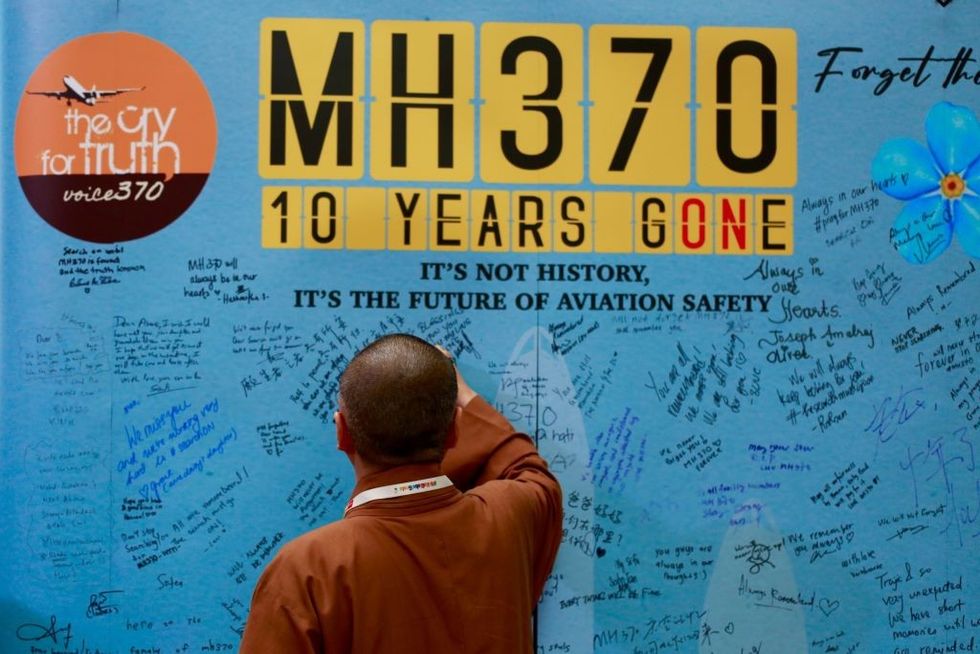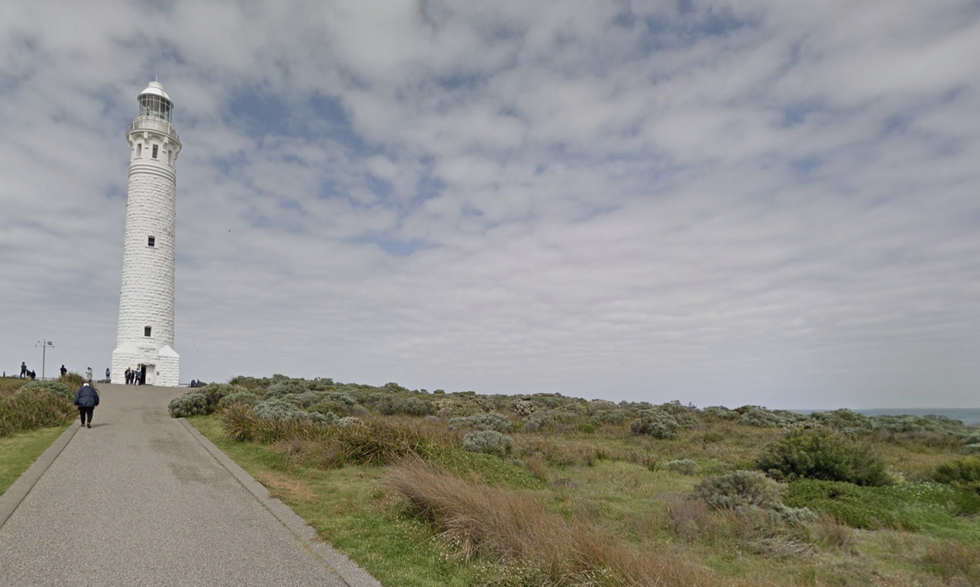MH370 breakthrough hopes surge as investigators plan to use 'pressure signals' to pinpoint location
MH370
The flight disappeared on Saturday, March 8 2014 during a routine journey from Kuala Lumpur to Beijing
Don't Miss
Most Read
Trending on GB News
A possible breakthrough in the case of MH370 could be on the cards as a new plan to use sea explosions has been put forward.
The plane went missing in 2014 during a flight between Malaysia and China, with no explanation ever given to why it disappeared.
However, according to findings published in Scientific Reports, audio signals captured at a hydro-acoustic station off the coast of Australia could be key to locating the doomed flight.
Researchers have proposed a series of controlled underwater explosions to see if they can isolate a more precise location.

Families write on the memorial wall for victims of MH370
Getty
Dr Usama Kadri from Cardiff University’s School of Mathematics said: "Our analysis shows clear pressure signals from previous aircraft crashes were detected on hydrophones, even at distances exceeding 3,000km
"In the case of MH370, official investigations concluded the aircraft must have crashed near the 7th arc, the point at which the last communication between the plane and INMERSAT [a British satellite telecommunications company] occurred.
"The main search area at the 7th arc lies less than 2,000km away from the hydroacoustic station at Cape Leeuwin, Australia, with no impediments to filter out the signal.
"However, within the time frame and location suggested by the official search, only a single, relatively weak signal was identified."
LATEST DEVELOPMENTS

Cape Leeuwin, Australia
Google Maps
The proposal would see a series of controlled underwater explosions or air gun fire along the 7th arc, something which could be used to determine the flight's final resting place.
It would not the first time the system has been used as it was utilised in the search for ARA San Juan, an Argentinian submarine that disappeared in 2017.
Dr Kadri added: "It is relatively straightforward and feasible and could provide a means to determine the signal’s relevance to MH370, prior to resuming with another extensive search. If found to be related, this would significantly narrow down, almost pinpoint, the aircraft’s location.
"On the other hand, if the signals are found to be unrelated, it would indicate a need for authorities to reassess the time frame or location established by their official search efforts to date."
Satellite data analysis showed the plane likely crashed somewhere in the southern Indian Ocean, off the coast of western Australia. However, two major searches failed to come up with any significant findings.
The final transmission from the Malaysia Airlines plane was about 40 minutes after it took off from Kuala Lumpur for Beijing. Captain Zaharie Ahmad Shah signed off with "Good night, Malaysian three seven zero", as the plane entered Vietnamese air space.
Shortly thereafter, its transponder was turned off, which meant it could not be easily tracked.
Malaysian Prime Minister Anwar Ibrahim said in March the government is willing to re-open an investigation into the disappearance of MH370, if there was a compelling case to do so.
Transport Minister Anthony Loke said US seabed exploration firm Ocean Infinity had been invited to discuss a new search proposal. Loke said Malaysia would talk to Australia about cooperation in resuming the search once Ocean Infinity's proposal is approved by Malaysia's cabinet.








